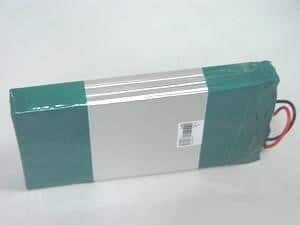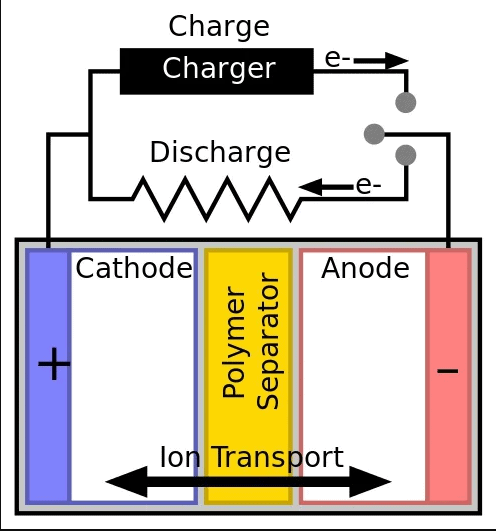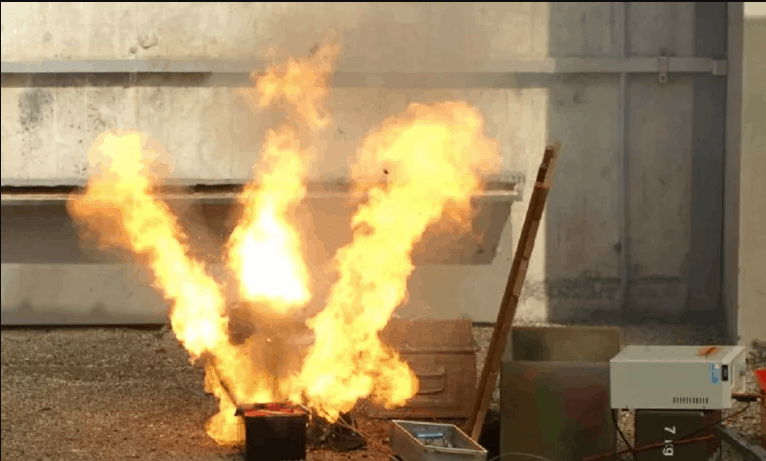Nowadays, 12.8v lithium ion battery, which we get familiar with, it is inside your tablet, phone, laptop and pretty much every other modern gadget you own, as well as electric cars and airplanes—are responsible for the portable device revolution. With their comparative low self-discharge, low weight, and very high energy efficiency, it is obvious that battery is here to stay, at least for now. But firstly, do you know what is lithium battery?
12.8v lithium-ion battery is a kind of battery which is made of lithium metal or lithium alloy as positive/negative material and uses non-aqueous electrolyte solution. In 1912, Gilbert N. Lewis proposed and studied the lithium metal battery firstly. The environmental requirements are very high because of the chemical characteristics of lithium metal is very active, preservation, making the processing and use of lithium metal. With the development of science and technology, lithium battery has become the mainstream. Lithium-ion batteries fall into two broad categories: lithium-metal battery and lithium-ion battery. Lithium-ion battery does not contain metallic lithium and are rechargeable. Lithium metal battery, the fifth generation product of rechargeable battery, was born in 1996. Its safety, specific capacity, self-discharge rate and performance-price ratio are better than lithium ion battery.

In order to understand the reasons why 12.8v lithium-ion battery sometimes fails, you need to know what’s going on under the hood. Inside the lithium-ion battery, there are two electrodes—the positive pole and the negative pole—separated by a thin sheet of “microperferated” plastic that keeps the two electrodes away from touching. When the lithium-ion battery is charged, lithium ions are pushed by electricity from the negative pole, through the microperferations in an electrically conductive fluid separator and separator, and to the positive pole. When the battery discharges, the reverse happens with the lithium ions flowing from the positive pole toward the negative pole.

If lithium battery is used inappropriately, it maybe cause explosion. Do you know why lithium battery explodes? Here are some reasons:
The battery is designed poorly, for example, the Galaxy Note 7. In that case, there wasn’t enough space for the separator and electrodes in the battery. In some models, when the battery expands a little as it gets charged, the electrodes bent and caused a short circuit. However, if quality control doesn’t keep strict enough or there’s some defect in manufacturing, a well-designed battery can fail.
Extreme heat is nearly guaranteed to cause a battery failure. Battery left too close to a heat source—or caught in a fire—has been known to explosion. What’s more, other external elements can also cause a lithium-ion battery failure. If you make your phone fall too hard or too many times, there is a chance you will damage the separator and cause the electrodes to touch. You will almost cause a short circuit certainly, if you impale the battery, either deliberately or accidentally.
A poorly insulated or badly made charger can damage a lithium-ion battery, too. If the charger generates heat near the battery, it can damage the battery and cause failure. That is the reasons why we suggest using only official chargers or high quality third party ones from qualified brand. Lithium-ion battery has built in protections to keep them away overcharging. While it is not common, if these safety precautions fail, overcharging is a good way to overheat a battery.

If a company can save a few pennies on each battery, that will become millions or billions in profit. Therefore, many lithium-ion battery manufacturers cut corners to price their cells more cheaply. The material may be imperfect, causing damage in the already-thin separators. Maybe they can save a few bucks by skimping on quality control or insulation. These things were likely a major cause of those hover board fires, which means that the first models on the market were expensive, and their cheap popularity bred knockoffs and even cheaper internals. Affordable components and crowd funding have democratized the consumer-electronics industry, but savings often come at the expense of safety
When you notice the battery is overheating or bulging, or if you hear a battery hissing or sputtering, take safety precautions immediately. Put the device on a non-flammable surface, preferably outside and keep it away from other people and buildings. If the device catches fire, call the firefighters immediately. But you can use water to put out a small lithium-ion battery fire, which will not be enough to extinguish a fire in the larger battery of hybrid or electric vehicles. You are going to need to use a Class D fire extinguisher or let the authorities take care of the fire.
You shouldn’t use it, if the device has been damaged, or if you know that someone made aftermarket modifications to an electronic device that contains a lithium-ion battery. Modifications and damage can compromise the protective film in a lithium-ion battery, resulting in a short circuit. Besides, the structural integrity of the device might be compromised, which could increase the risk of an explosion and limit the device’s ability to withstand the pressure of a battery fire.
12.8v lithium ion battery are widely used, although often have news of lithium battery explosion and fire, but the proper use of lithium battery, good quality in many protective measures under the protection of a burning explosion probability, probability of less than one over one hundred million, we have been the possibility of a battery wounding, actually lower than a lottery prize.